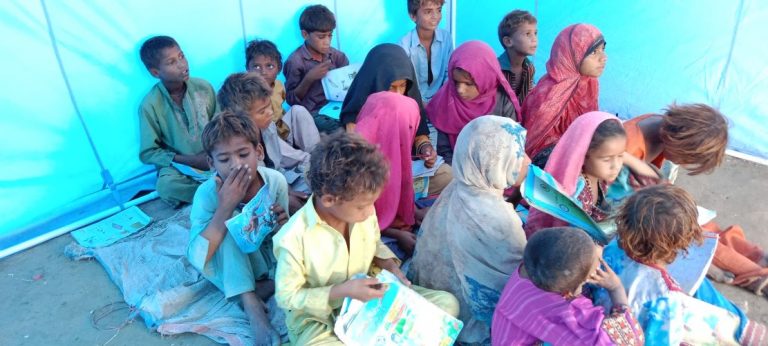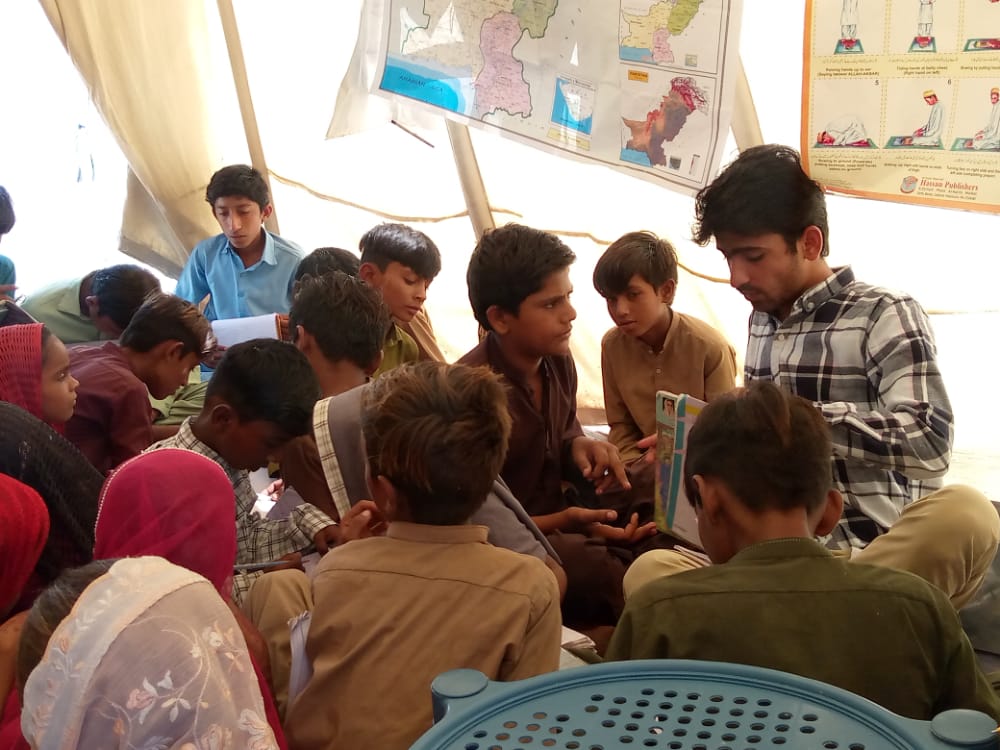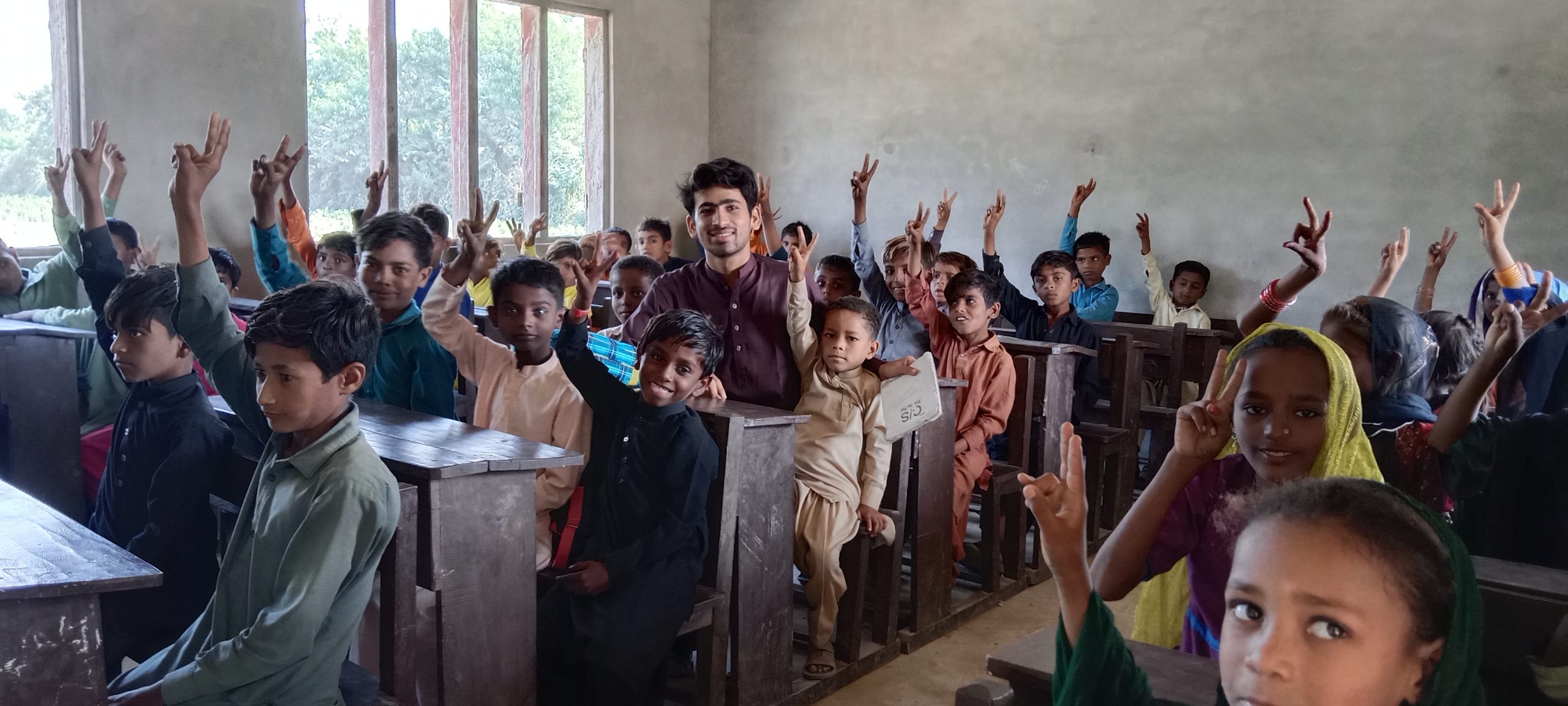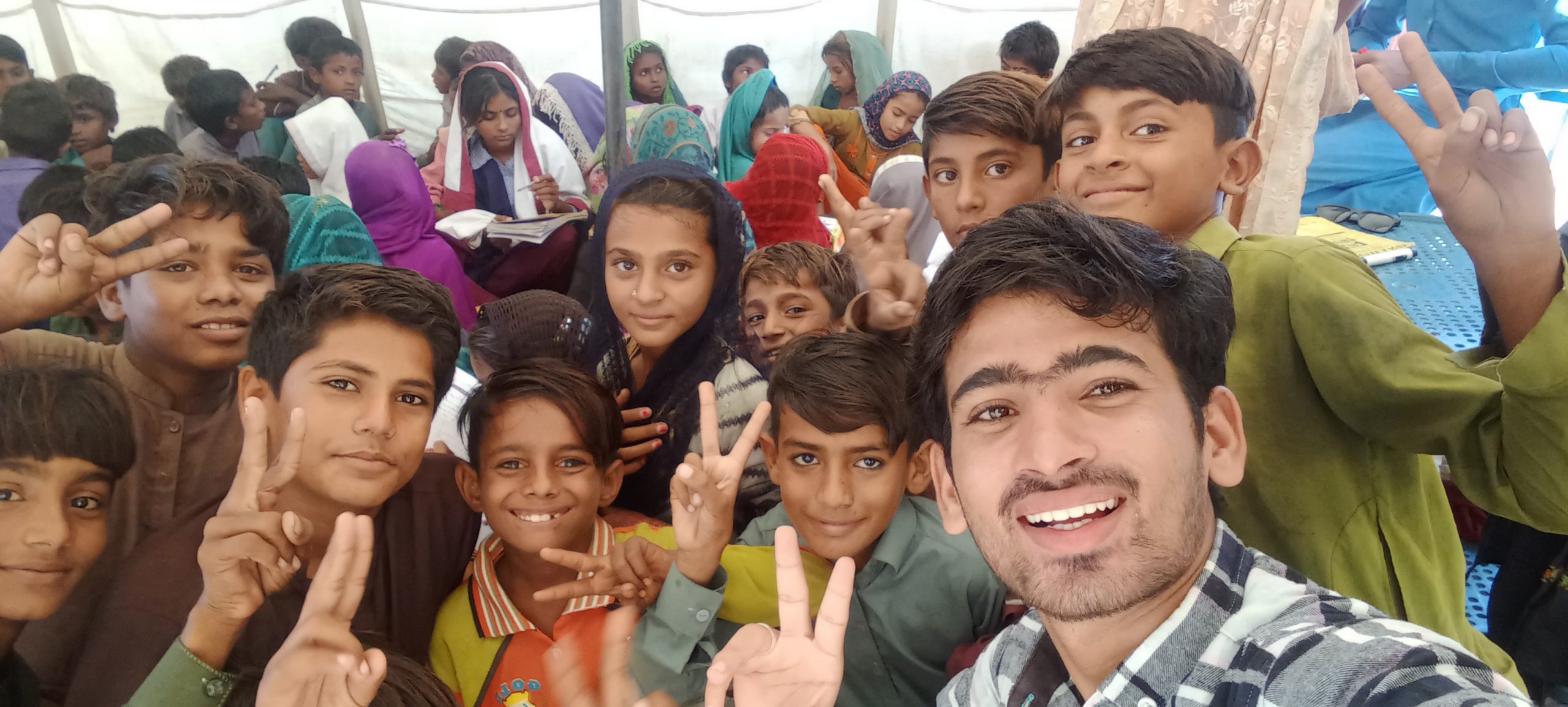
This is ‘A Call for Urgent Action’ as according to an official survey, more than 50% of students in the country have reported learning losses due to the pandemic
Waqar Abbasi
During the COVID-19 pandemic, ‘learning poverty’ had come to the forefront. Learning poverty is a term used to describe the lack of foundational literacy and numeracy skills that children have by the time they reach early adolescence. According to the World Bank, children who have not achieved basic reading and math skills by the age of 10 are considered to be living in learning poverty. As of 2019, 57 percent of 10-year-olds in low- and middle-income countries (LMICs), updated in 2022, were in learning poverty globally, which is projected to have reached 68–71 percent in LMICs in 2022. This issue occurs in many parts of the world, particularly in developing countries, as learning poverty is a serious problem closely linked to economic poverty among children from developing nations. They are likely to have less access to quality education and other resources that can support their learning. SDG’s (Sustainable Development Goals) definition of minimum proficiency level, where reading proficiency is defined as: “Students independently and fluently read simple, short narrative and expository texts. They locate explicitly stated information. They interpret and give some explanations about the key ideas in these texts. They provide simple, personal opinions or judgments about the information, events, and characters in a text.”
 Annually, millions of dollars are spent in the name of education, but even then we have 22.8 million children out of school
Annually, millions of dollars are spent in the name of education, but even then we have 22.8 million children out of school
Learning Poverty in Pakistan refers to the loss of education and knowledge that students have experienced due to the COVID-19 pandemic and the resulting disruptions to the education system. According to a survey conducted by the Pakistan Bureau of Statistics, more than 50% of students in the country have reported learning losses due to the pandemic. Moreover in Pakistan, learning poverty is a significant challenge, with a large number of children unable to read and comprehend simple texts by age 10. According to the latest available data from the World Bank, the learning poverty rate in Pakistan was 75% in 2019 (Brief, 2019). This means that 75 percent of children in Pakistan were unable to read and understand a simple text by the age of 10. This is a significant problem that requires immediate attention. Many factors contribute to learning poverty in Pakistan, including poverty, a lack of access to quality education, insufficient educational funding, and a shortage of trained and qualified teachers. Furthermore, cultural and social barriers prevent children, particularly girls, from attending school and accessing education. To address learning poverty in Pakistan, there is a need to increase education investment and focus on improving educational quality. This includes investing in teacher education, curriculum development, and providing access to high-quality learning materials. Furthermore, reducing learning poverty in Pakistan is critical for the country’s economic development and for improving the well-being of its people. To ensure that every child in Pakistan has access to quality education and the opportunity to learn and grow, the government, civil society, and international organizations must work together.
 Learning poverty has increased not only with COVID-19 but also with last year’s flood. Last year Pakistan was drenched by extreme monsoon rains that led to the country’s worst flooding in a decade, as per a report by NDMA the flood affected more the 33 million people and destroyed 1 million houses, not only this but this flood has also devastated the education sector of the country, according to data from Provincial Education Department, 18,590 school have been damaged or destroyed as a result of emergencies around the country, Sardar shah minister of Education has mentioned that in Sindh, around 2 million children are out of school due to damage to the infrastructure in most in the affected districts. As I have mentioned above, 22.8 million children between the ages of 5 and 16 are out of school in Pakistan. During my research work in flood-affected areas, I used different methodologies for assessing students reading and writing from grades one to five to understand their reading and writing competencies. The reason why I chose these grades in our education system is that most of the students are enrolled at the age of five. The sample of my study was students from the age group of 10–14; these students are not only studying in tent schools, or TLC (Temporary Learning Centers), but also students from the SEF (Sindh Education Foundation), who are living in learning poverty. To simplify, let’s discuss a few case studies: In English reading. Why reading? According to the World Bank, reading is a gateway for learning as the child progresses through school—and conversely, an inability to read slams that gate shut. Beyond this, when children cannot read, it’s usually a clear indication that school systems aren’t well organized to help children learn in other areas such as math, science, and the humanities. And although it is possible to learn later in life with enough effort, most students can’t read even the first lesson of their book from Grade 6. Two students, Jaswant and Bandia, can’t even read the first lesson of the English book for grades five, four, three, two, and one. He only read the alphabet series perfectly Bandia is also not capable of reading the English book of Grade 6, but she can read the first few lessons from the book of Grade 5. Bandia can easily read those words that are common and easy, like the words that are repeated in previous textbooks. She mostly feels difficulty pronouncing words that are new in the textbook and long, which is why she can’t pronounce and define the meaning of those words, but she can write them properly by seeing them in a textbook. Wakeel is in Grade Five; he can’t read the first lesson of books five, four, three, two, and one; he can only read the alphabet series perfectly. These facts are not ignorable because this is not just about reading a single passage. Just think about the boy who has spent the last ten years of his life getting an education but is unable to read and understand things. What does it mean that he has wasted his critical age and gotten nothing? These findings are really shocking, and it is not just one, two, or three students; more than 75% of Pakistani students are affected. They face challenges not only in their academic careers but also in their professional lives. They will have fewer job opportunities in the future because they lack strong reading and writing skills. Lower Earning Potential Inadequate reading abilities can result in lower earning potential. Reading comprehension is essential for gaining knowledge, gaining access to information, and staying current on market trends.
Learning poverty has increased not only with COVID-19 but also with last year’s flood. Last year Pakistan was drenched by extreme monsoon rains that led to the country’s worst flooding in a decade, as per a report by NDMA the flood affected more the 33 million people and destroyed 1 million houses, not only this but this flood has also devastated the education sector of the country, according to data from Provincial Education Department, 18,590 school have been damaged or destroyed as a result of emergencies around the country, Sardar shah minister of Education has mentioned that in Sindh, around 2 million children are out of school due to damage to the infrastructure in most in the affected districts. As I have mentioned above, 22.8 million children between the ages of 5 and 16 are out of school in Pakistan. During my research work in flood-affected areas, I used different methodologies for assessing students reading and writing from grades one to five to understand their reading and writing competencies. The reason why I chose these grades in our education system is that most of the students are enrolled at the age of five. The sample of my study was students from the age group of 10–14; these students are not only studying in tent schools, or TLC (Temporary Learning Centers), but also students from the SEF (Sindh Education Foundation), who are living in learning poverty. To simplify, let’s discuss a few case studies: In English reading. Why reading? According to the World Bank, reading is a gateway for learning as the child progresses through school—and conversely, an inability to read slams that gate shut. Beyond this, when children cannot read, it’s usually a clear indication that school systems aren’t well organized to help children learn in other areas such as math, science, and the humanities. And although it is possible to learn later in life with enough effort, most students can’t read even the first lesson of their book from Grade 6. Two students, Jaswant and Bandia, can’t even read the first lesson of the English book for grades five, four, three, two, and one. He only read the alphabet series perfectly Bandia is also not capable of reading the English book of Grade 6, but she can read the first few lessons from the book of Grade 5. Bandia can easily read those words that are common and easy, like the words that are repeated in previous textbooks. She mostly feels difficulty pronouncing words that are new in the textbook and long, which is why she can’t pronounce and define the meaning of those words, but she can write them properly by seeing them in a textbook. Wakeel is in Grade Five; he can’t read the first lesson of books five, four, three, two, and one; he can only read the alphabet series perfectly. These facts are not ignorable because this is not just about reading a single passage. Just think about the boy who has spent the last ten years of his life getting an education but is unable to read and understand things. What does it mean that he has wasted his critical age and gotten nothing? These findings are really shocking, and it is not just one, two, or three students; more than 75% of Pakistani students are affected. They face challenges not only in their academic careers but also in their professional lives. They will have fewer job opportunities in the future because they lack strong reading and writing skills. Lower Earning Potential Inadequate reading abilities can result in lower earning potential. Reading comprehension is essential for gaining knowledge, gaining access to information, and staying current on market trends.
Skill Development Difficulties
Reading is important not only for acquiring knowledge but also for ongoing learning and skill development.
Limited Career Growth
The inability to read and comprehend complex texts can hinder career growth opportunities. Many high-level positions require strong analytical and critical thinking abilities, which are often honed through extensive reading.
Communication Challenges
Effective communication is crucial in any professional setting. Poor reading skills can impact not only written communication but also verbal communication. Difficulties in reading can affect one’s ability to express ideas, understand instructions, and interact effectively with colleagues, clients, and superiors. So, what should we do to mitigate this learning crisis?
Education is not top of the government’s list. Not even the World Forums are much interested to work on education in the real world
 In September 2015, the United Nations established the global goal for human development, The Sustainable Development Goal, which also included SDG 4, which stands for Sustainable Development Goal 4, which is one of the 17 global goals. It aims to ensure inclusive and equitable quality education and promote lifelong learning opportunities for all. In 2022, the World Bank, UNICEF, FCDO, USAID, and the Bill & Melinda Gates Foundation, in partnership with UNESCO, launched a technical framework called the RAPID framework to recover and accelerate learning. Each word in RAPID has a goal through which the learning crisis can be mitigated, Reach every child and keep them in school, and Assess learning levels regularly, Prioritize teaching the fundamentals, Increase the efficiency of instruction, Develop psychosocial health and well-being. With all these efforts of the UN, it still seems impossible to achieve this goal by 2030 in a country like Pakistan, because each and every government that has ruled the country has never ever in practice to set priorities. Education is not first on their list. Not even the World Forums are much interested to work on education in the real world; annually, millions of dollars are spent in the name of education, but in the last, we had 22.8 million children out of school.
In September 2015, the United Nations established the global goal for human development, The Sustainable Development Goal, which also included SDG 4, which stands for Sustainable Development Goal 4, which is one of the 17 global goals. It aims to ensure inclusive and equitable quality education and promote lifelong learning opportunities for all. In 2022, the World Bank, UNICEF, FCDO, USAID, and the Bill & Melinda Gates Foundation, in partnership with UNESCO, launched a technical framework called the RAPID framework to recover and accelerate learning. Each word in RAPID has a goal through which the learning crisis can be mitigated, Reach every child and keep them in school, and Assess learning levels regularly, Prioritize teaching the fundamentals, Increase the efficiency of instruction, Develop psychosocial health and well-being. With all these efforts of the UN, it still seems impossible to achieve this goal by 2030 in a country like Pakistan, because each and every government that has ruled the country has never ever in practice to set priorities. Education is not first on their list. Not even the World Forums are much interested to work on education in the real world; annually, millions of dollars are spent in the name of education, but in the last, we had 22.8 million children out of school.
__________________
Waqar Abbasi is a passionate researcher and anthropologist based in Larkana, Sindh Pakistan. He holds a Master’s degree in Anthropology from the Anthropology and Archaeology Department, University of Sindh Jamshoro. Currently, he is engaged in an ethnographic research study focusing on “Schooling in the time of Disaster,” specifically analyzing the impact of the devastating super flood of 2022. This thesis research project aims to shed light on the challenges faced by the education system during such crises. Email: waqar_anthro@hotmail.com
Good